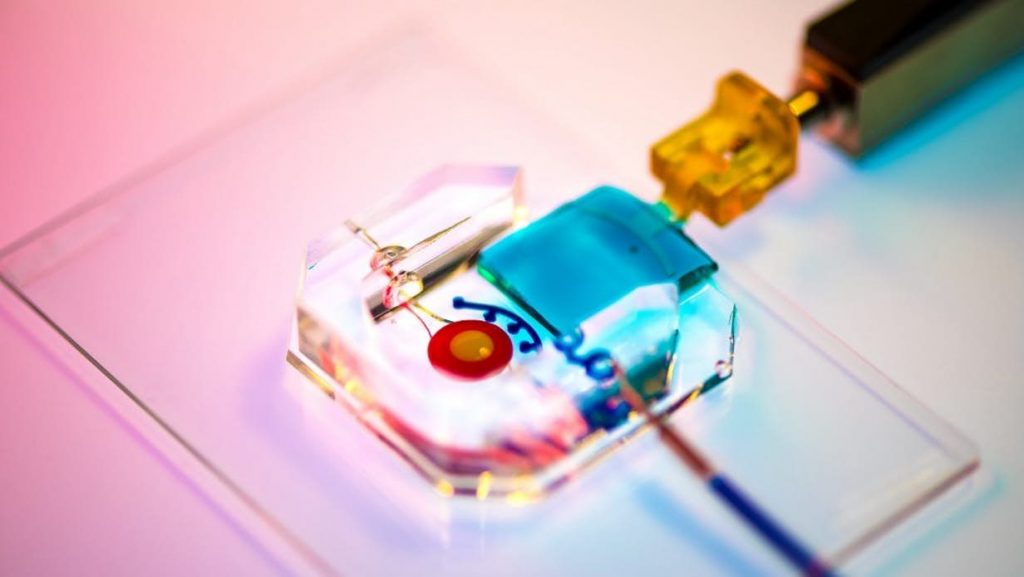The dry eye disease (DED) is not an uncommon condition. However, despite it being common, there are very few drugs that have been approved for its treatment. Why is it so? It turns out that this is because testing of such medications for dry eye disease on an actual human eye would prove to be quite risky. This led a team at Pennsylvania State University to create a blinking eye-on-a-chip.
The team was being led by Associate Professor Dan Huh and graduate student Jeongyun Seo. It features a dime-sized 3D printed porous surface that is shaped like a dime as well. This serves as a scaffolding for human eye cells to grow within. The dyed-yellow corneal cells grow on the inner circle of this surface, whereas the dyed-red cells of the conjunctiva create a ring around this circle. For those who do not know; the conjunctiva is the tissue that covers the white part of the eye.
The eye on a chip also has a mechanical tear duct that secretes dyed-blue artificial tears. These tears are then spread uniformly across the cells using an artificial eyelid that is comprised of a slab of gelatin and is activated by a motor. The slab travels at the same speed as a normal person blinks, thus creating a ‘tear film.’ Dry eye disease happens when the natural version of this film is evaporating quicker than it can be replenished. This happens because people generally tend to blink less when they are performing certain activities, such as using a computer for longer spans of time. The result of dry eye disease is inflammation and irritation of the cornea.
During the lab tests, the dry eye disease was induced by having the eye-on-a-chip placed in an enclosed environment while maintaining the humidity of an average home or office. Furthermore, its blinking rate was reduced almost to half. The cells started to react negatively to the change, much like the natural ones do in a human eye. A promising new lubricating drug was then introduced into the system, and it was observed that it successfully reduced the dry eye disease symptoms. The clinical trials of this particular drug have created a similar effect in human test subjects suffering from dry eye disease.
Seo said, ‘Although we have just demonstrated proof-of-concept, I hope our eye-on-a-chip platform is further advanced and used for a variety of applications besides drug screening, such as testing of contact lenses and eye surgeries in the future.’ A paper on the research has been published in the journal Nature Medicine.

